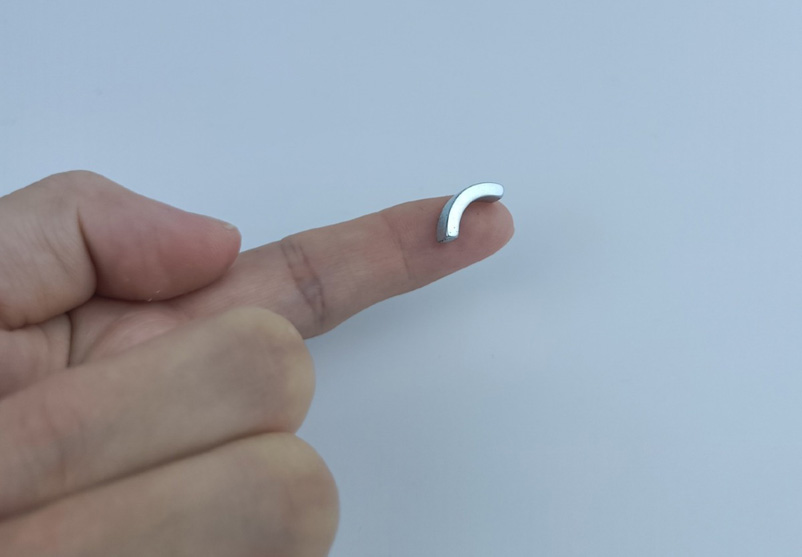Do magnets (permanent magnets) lose their magnetic strength over time? This is a question that many people are concerned about, and in today's article you will be introduced to this question in detail.
Over time, permanent magnets do lose negligible magnetic properties due to temperature changes, mechanical damage, corrosion and improper storage. For example, samarium cobalt magnets take about 700 years to naturally lose half their strength, while neodymium magnets only lose about 5% of their magnetic properties every 100 years.
Magnets attached to refrigerators are known to fall off after a few years, and magnets on toys lose their strength over time. In fact, so-called “permanent magnets” are not really permanent.
The accompanying picture shows a galvanized small curved magnet, because it is used in electric motors, which generally need to withstand temperatures of 100 degrees Celsius or more.

Demagnetization (the process of reducing or removing the magnet's magnetic properties) is usually done artificially, but can also occur naturally.
When exposed to high temperatures, the atoms within the magnet begin to vibrate at increasing speeds and in a more frantic manner. This forces some of the magnetic domains out of alignment, which leads to a decrease in magnetic force. At high enough temperatures, all the magnetic domains are pushed into misalignment and the magnetic force is completely lost. The temperature at which a magnet loses its permanent magnetism is called the Curie point or Curie temperature.
Although high temperatures are one of the main methods of demagnetizing magnets, both ceramic ferrite magnets and rare-earth neodymium magnets require high temperatures to make them disappear, and it is not common for magnets to be exposed to such high temperature levels in everyday life. Therefore, the natural loss of magnetism is mainly due to other factors.
Improper storage, for example, while it may seem insignificant, proper storage of magnets is critical to ensure that they don't lose their strength over time.
Most magnets contain moderate amounts of iron, which oxidizes and corrodes in the presence of oxygen and water. The most commonly used and strongest permanent magnets, neodymium magnets, are also the most susceptible to corrosion due to their high iron content (over 60%). The loss of magnetism results from corrosion changing the underlying chemical structure (iron oxide) that makes the material magnetic.
Incorrect placement of a magnet near another stronger magnet can also result in partial or complete loss of magnetism. Similar magnetic poles of different magnets should not come into contact with each other, as strong magnets will force the magnetic domains of weak magnets to change direction
Then again, physical damage, such as a knock or drop, can change the internal structure of the magnet and can cause a loss of magnetism.
To prolong the life of the magnet and prevent loss of magnetism, store the magnet in a dry place. If you are going to put more than one magnet together, it is best to attach the N end of one magnet to the S end of another magnet.
Article Knowledge Supplement;
How should powerful neodymium magnets be properly store?
Do neodymium magnets demagnetise at transient high temperatures?
 China Neodymium And Ferrite Magnets Manufacturer & Supplier
China Neodymium And Ferrite Magnets Manufacturer & Supplier 


